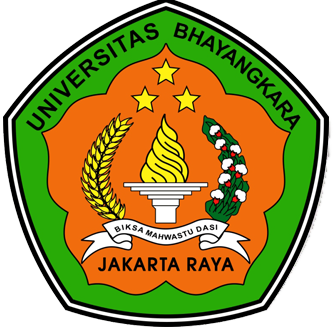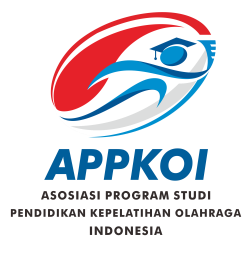Forehand Smash Badminton Training Models For U-13 And U-15 Athletes
DOI:
https://doi.org/10.31599/bgqrx654Keywords:
Forehand Smash, Training Model, Badminton, Smash AccuracyAbstract
Purpose – This research aims to provide variation of training and improve the results of smash badminton training especially smash accuracy. Design/methodology/approach – This research is research and development using the Borg and Gall model. The research site is at PB Jaya Raya Metland Jakarta with test models and test instruments in several clubs in the city and Bekasi district. Findings – There are three types of training models developed: footwork and shadow smash, plyometric and drill training models, and game patterns and situation models using Denatara BISA (Badminton Integrated Smash Accuracy) Smash Training Model.Research limitations/implications – The focus of this research is on the urgency of occurring minimal variation of the smash training model for athletes U-13 (age 11-12 years) and U-15 (age 13-14 years) according to the division of age groups listed in the PP PBSI regulations.Practical implications – With implications on the variable training model combined with technology-based test instruments can drive athletes in smash practice and can improve the results of smash training especially its accuracy.Originality/value – This research is relevant to the National Research Master Plan (RIRIN) related to the application of technological innovation especially in the field of education and sports.
Downloads
References
Azwar, S. (2001). Research Methods (I). Yogyakarta: Student Library.
Bompa, O., & Tudor. (1994). Translation of the book Theory And Methodology Of Training . Bandung: Padjadjaran University Postgraduate Program.
Denatara, E.T. (2020). Badminton Textbook . Guepedia.com.
Dennis Ariadinata S, Firmansyah Dlis, & Johansyah Lubis. (2020). Media-Based Attacking Training Model in Martial Arts Fencing. Physical Education Journal , 7 (1), 1–14. https://doi.org/10.46244/penjaskesrek.v7i1.1003
Hariono, A. (2006). Methods of physical training for pencak silat . Yogyakarta: FIK UNY.
Harsono. (2001). Coaching Guide . Yogyakarta: FIK UNY.
Irianto, DP (2002). Coachin Irianto, DP (2002). Coaching Basics . FIK. Yogyakarta State University.
Iskandar, Z., & Tilarso, M. (1999). Technical Guide to Physical Fitness Tests and Exercises. PPPITOR. Menengpora. Poole, James. (2013). Learn Badminton . Bandung: CV Pionir Jaya.
Lubis, J. (2021). Petanque: Mental Imagery and Shooting Accuracy . 36 (Icssh 2020), 35–37.
Lubis, J., Haqiyah, A., Kusumawati, MIA, & Irawan, AAYU (2022). Original Article Do problem-based learning and flipped classroom models integrated with Android applications based on biomechanical analysis enhance the learning outcomes of Pencak Silat? 22 (12), 3016–3022. https://doi.org/10.7752/jpes.2022.12381
Muhajir. (2004). Physical Education Theory and Practice for Class X High School . Erlangga.
Ningrum, DTM, Tangkudung, J., Lubis, J., Riza, AR, & Denatara, ET (2021). The effectiveness of small side games (Ssg) in forearm pass volleyball use application in mobile phone. International Journal of Human Movement and Sports Sciences , 9 (4), 642–647. https://doi.org/10.13189/saj.2021.090406
Purnama, SK (2010). Modern badminton coaching . Surakarta: Yuma Pustaka.
Pusat, P., Badminton, P., Indonesia, S., & Pb, PP (2019). All Indonesia Badminton Association Organizational Regulations .
Republic of Indonesia. (2022). Law of the Republic of Indonesia Number 11 of 2022 concerning Sports. Jdih. Bpk Ri, 1–89.
Law (UU) Number 11 of 2022
Saputra, TW, & Sepdanius, E. (2019). The Effect of Shadow Training on Increasing the Agility of PB Badminton Athletes. Fifty Cities. Journal of Stamina, 2(9), 171–177.
Subardjah, H. (2000). Badminton. Ministry of Education.
Subardjah, H. (2000). Badminton. Bandung: Pioneer Jaya.
Sugiyono, MPPPK (2007). Qualitative and R&D. Bandung: Alphabeta.
Sugiyono, MPPPK (2011). Quantitative, Qualitative and R&D Research Methods. Bandung: Afabeta.
Sukadiyanto. (2002). Introduction to Physical Training Theory and Methodology. Yogyakarta: PKO FIK UNY.
Sukadiyanto. (2010). Introduction to the theory and methodology of physical training. Yogyakarta: Yogyakarta State University.
Sukamti, ER (2007). Motor Development . Diktat. UNY Faculty of Sports Science. Yogyakarta.
Tohar, M. (1992). Badminton Sports of Choice . Jakarta: Depdikbud Director General of Higher Education.
Tony, G. (2007). Practical Badminton Instructions for Beginners and Advanced. Jakarta: PT. Raja Grafindo Persada.
Downloads
Published
Issue
Section
License
Copyright (c) 2024 Eskar Tri Denatara

This work is licensed under a Creative Commons Attribution 4.0 International License.






.png)







